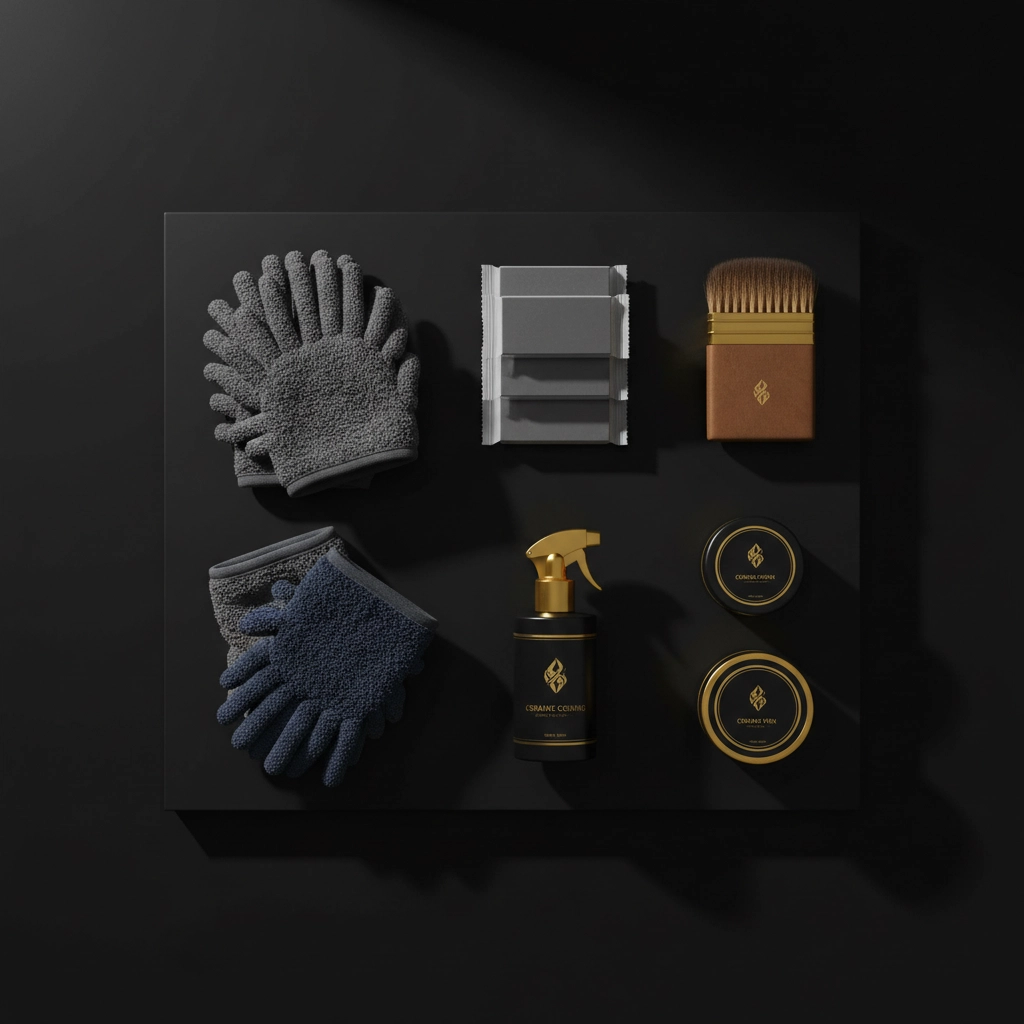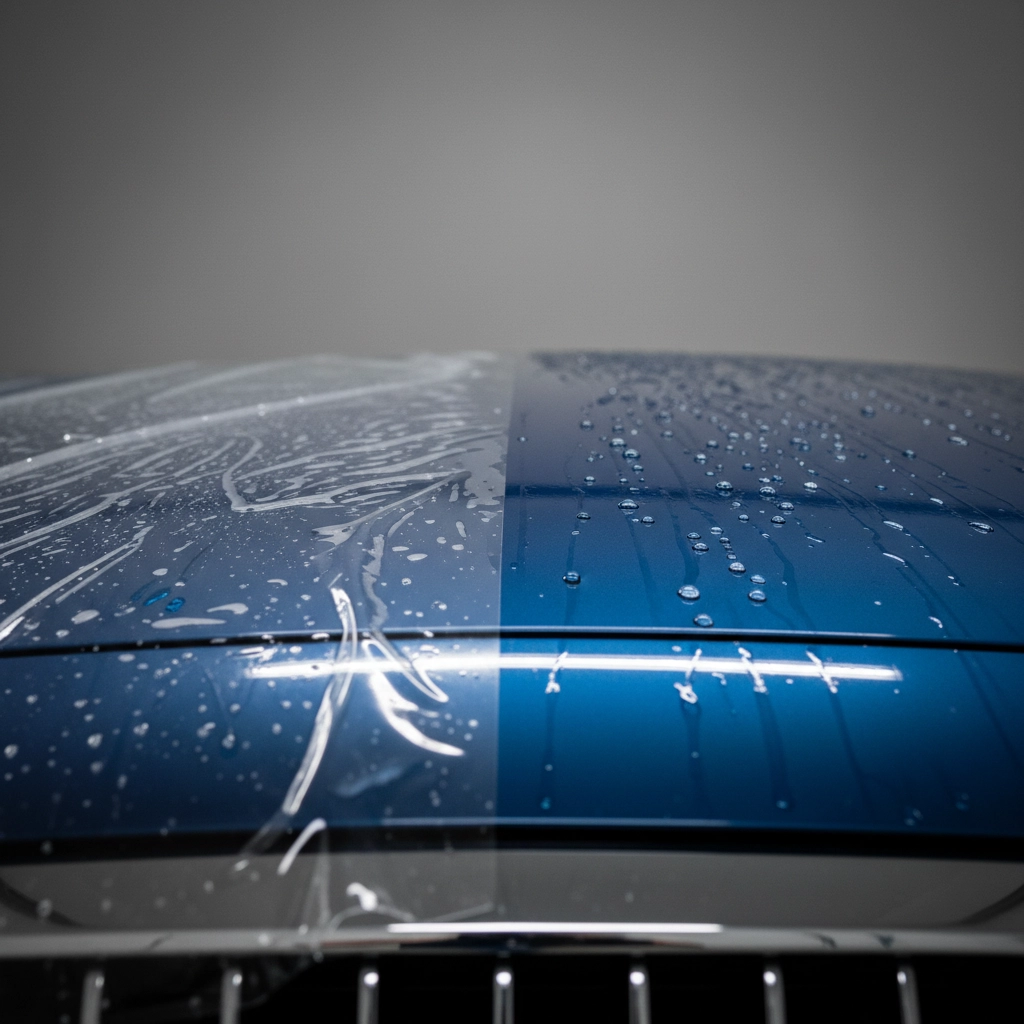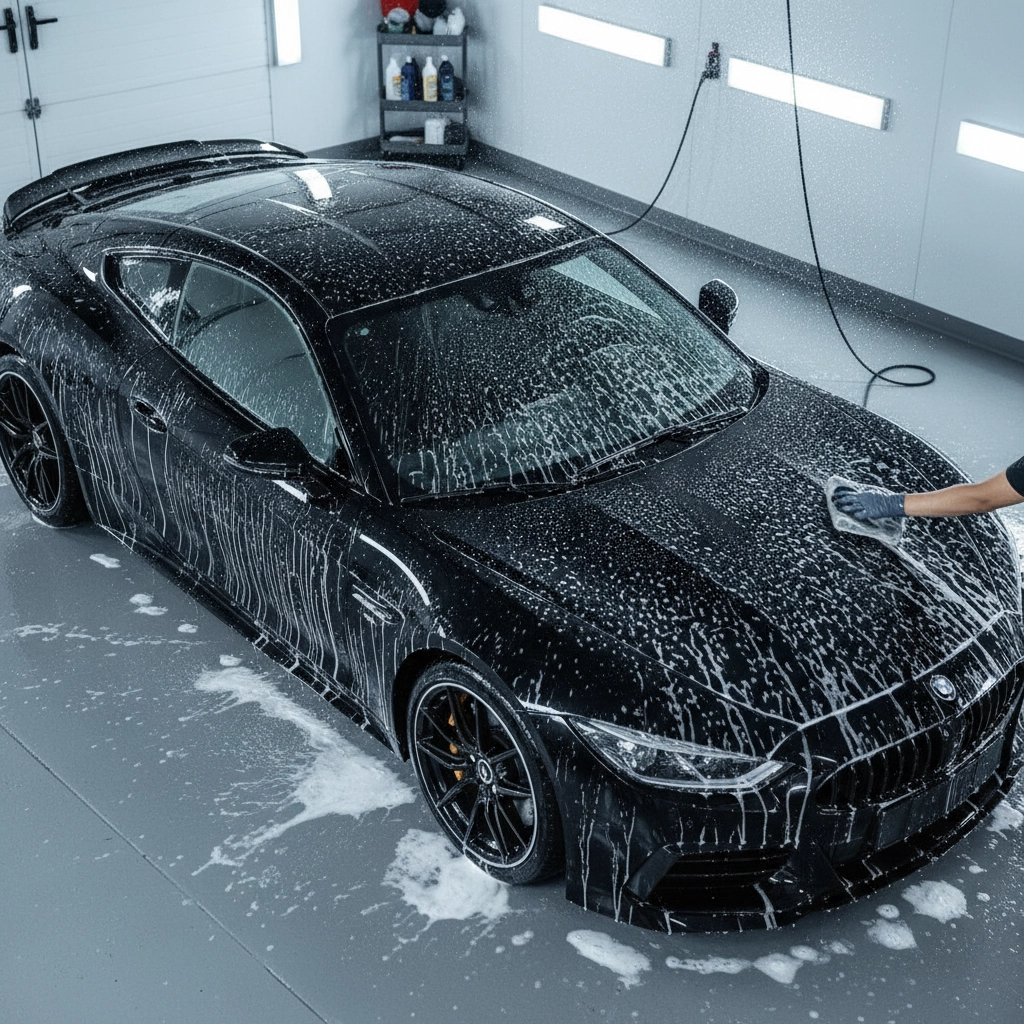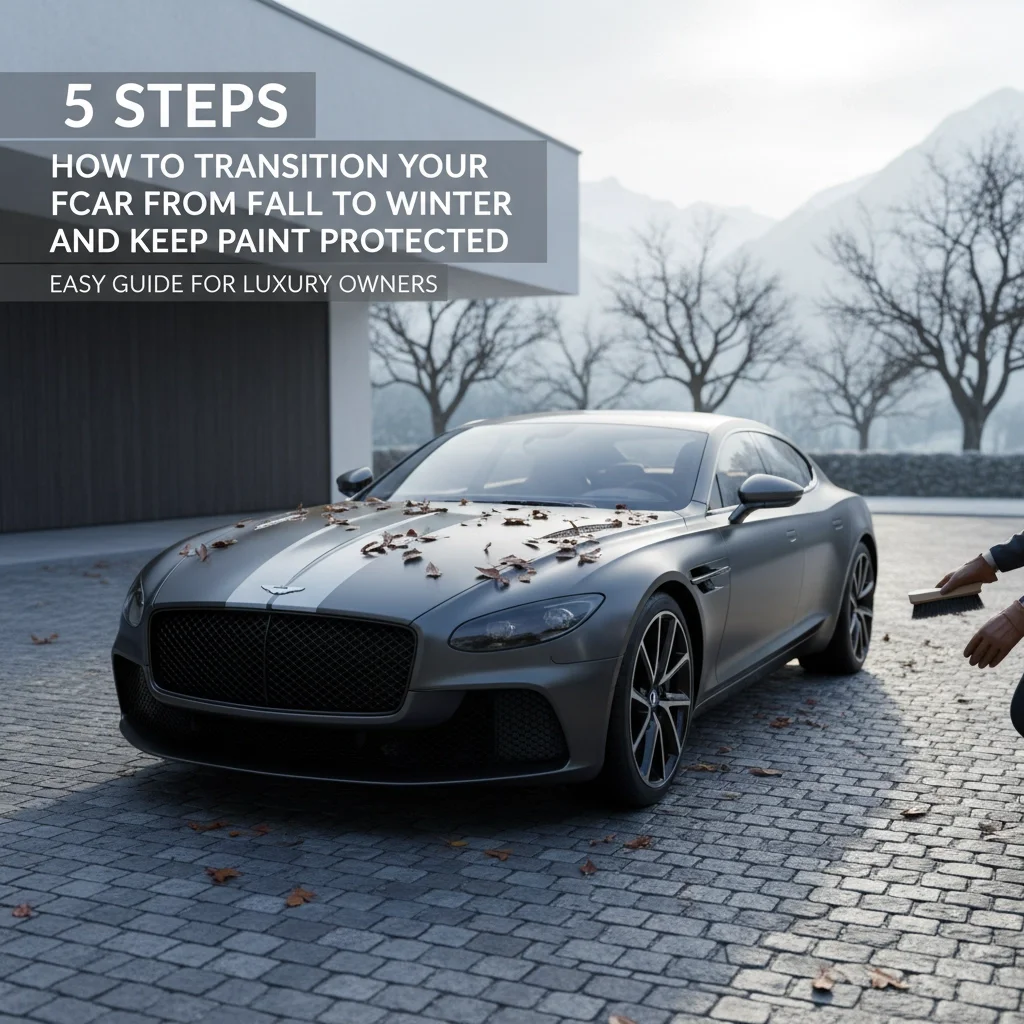5 Steps How to Transition Your Car From Fall to Winter and Keep Paint Protected (Easy Guide for Luxury Owners)
Winter preparation for your luxury vehicle demands the same meticulous attention to detail that went into its original craftsmanship. As someone who has dedicated my career to preserving automotive excellence, I understand that your investment deserves nothing less than comprehensive protection against winter's harsh realities. Road salt, freezing temperatures, and abrasive conditions pose significant threats to your vehicle's pristine finish: but with proper preparation, your luxury car can emerge from winter looking as stunning as the day you drove it home.
The transition from fall to winter represents a critical window of opportunity. This is when proactive care makes the difference between maintaining that showroom brilliance and facing costly paint restoration come spring. Through years of working with discerning clients who demand perfection, I've developed a systematic approach that not only protects your vehicle's paint but ensures optimal performance throughout the harshest months.
Step 1: Execute a Comprehensive Deep Clean and Base Protection Application
Your winter preparation journey begins with the most thorough cleaning your vehicle will receive all year. This isn't simply about aesthetics: it's about creating the perfect foundation for every protective measure that follows.
Start with a meticulous hand wash using pH-balanced, luxury-grade automotive shampoo. Every surface demands attention: wheel wells where salt accumulates, door jambs where moisture hides, and paint surfaces where microscopic contaminants embed themselves. The goal is complete decontamination, removing every trace of fall debris, tree sap, and environmental pollutants that could compromise your protective layers.
Following the wash, clay bar treatment becomes essential. This process removes bonded contaminants that washing alone cannot eliminate: those tiny particles that feel rough to the touch and create an imperfect surface for wax adhesion. For luxury vehicles, this step is non-negotiable.

The application of high-quality carnauba wax or synthetic sealant completes this foundation phase. Choose products specifically formulated for premium vehicles, as these contain higher concentrations of protective polymers and UV inhibitors. Apply in thin, even coats, working in small sections to ensure complete coverage. This base protection layer serves as your first line of defense against winter's assault, creating a hydrophobic barrier that repels water, snow, and road salt.
Step 2: Install Advanced Paint Protection Systems
Base wax protection, while important, represents only the beginning of serious winter preparation. Luxury vehicle owners who understand long-term value preservation invest in advanced protection systems that provide superior durability and performance.
Paint Protection Film (PPF) stands as the ultimate defense for high-impact areas. Applied to the front bumper, hood, side mirrors, and door handles, this transparent urethane film absorbs impacts from road debris while maintaining optical clarity. Quality PPF installations include self-healing properties, meaning minor scratches disappear with heat exposure.
Ceramic coating application over your base protection creates an additional barrier with remarkable properties. Professional-grade ceramic coatings bond at the molecular level with your paint, creating a surface that repels water more effectively than any traditional wax. The hydrophobic effect means snow and ice slide off more easily, while road salt struggles to adhere to the protected surface.
For areas receiving PPF installation, ceramic coating application over the film creates a synergistic protection system. The coating enhances the film's self-healing properties while providing additional chemical resistance and easier cleaning capabilities.

This dual-layer approach: PPF for physical protection, ceramic coating for chemical resistance: represents the gold standard in luxury vehicle winter preparation. The initial investment pays dividends in maintained resale value and reduced maintenance requirements throughout the season.
Step 3: Winterize Essential Vehicle Components for Optimal Performance
Paint protection means nothing if your luxury vehicle cannot perform reliably throughout winter. Comprehensive winterization addresses every system that cold weather affects, ensuring your car operates with the same precision and reliability you expect.
Tire and Wheel Preparation
Winter tire installation represents the single most important safety modification for cold-weather driving. Premium winter tires utilize specialized rubber compounds that remain flexible in freezing temperatures, while aggressive tread patterns provide superior traction on snow and ice. For luxury vehicles, consider purchasing a dedicated set of winter wheels to preserve your original rims from salt corrosion.
Proper tire pressure monitoring becomes crucial as temperatures drop. Cold air causes pressure reduction of approximately one PSI for every 10-degree temperature decrease. Maintain manufacturer-specified pressures to ensure optimal handling, fuel economy, and tire longevity.
Fluid System Optimization
Engine oil viscosity directly impacts cold-weather starting and engine protection. Switch to a full-synthetic oil with appropriate cold-weather viscosity ratings. Your luxury vehicle's precision-engineered components demand consistent lubrication, even in sub-zero conditions.
Coolant system inspection ensures proper freeze protection while preventing corrosion in aluminum and steel components. The coolant mixture should provide protection to at least -30°F, with quality antifreeze containing corrosion inhibitors specifically formulated for your vehicle's materials.
Battery and Electrical System Verification
Cold weather reduces battery capacity by up to 50%, making electrical system reliability critical. Professional battery testing identifies potential failures before they leave you stranded. Consider battery tender installation for vehicles experiencing extended storage periods.

Step 4: Establish Rigorous Winter Maintenance Protocols
Protecting your luxury vehicle's paint throughout winter requires consistent, proactive maintenance. Road salt, the primary threat to automotive finishes, begins its corrosive work immediately upon contact. Establishing regular cleaning protocols prevents long-term damage while maintaining that pristine appearance you've invested so heavily in achieving.
Strategic Washing Schedule
Winter washing requires a different approach than fair-weather maintenance. Wash your vehicle every two weeks minimum, increasing frequency during periods of heavy salt usage. Use warm water and pH-neutral shampoo formulated for cold-weather washing. Pay special attention to wheel wells, door frames, and undercarriage areas where salt accumulates.
The two-bucket method becomes even more critical in winter. Contaminated wash media can scratch paint surfaces softened by cold temperatures. Use separate buckets for washing and rinsing, with grit guards in both to trap particles and prevent them from returning to your wash mitt.
Post-Wash Protection Maintenance
After each winter wash, inspect your protective coatings for integrity. Quality ceramic coatings should maintain their hydrophobic properties throughout winter, with water beading tightly and rolling off surfaces easily. If beading becomes less pronounced, apply a ceramic coating maintenance product to restore optimal performance.
Wax-based protection requires more frequent renewal during winter months. Plan for reapplication every 6-8 weeks, as road salt and frequent washing gradually diminish protective capabilities.
Undercarriage Attention
Professional undercarriage cleaning removes salt buildup from areas you cannot reach during regular washing. Schedule monthly undercarriage treatments during peak winter months, focusing on suspension components, brake lines, and exhaust systems where corrosion damage proves most costly.
Step 5: Implement Optimal Storage and Environmental Protection
The environment where your luxury vehicle spends its time significantly impacts how well it weathers winter conditions. Whether daily driven or seasonally stored, strategic environmental management protects your investment while minimizing exposure to damaging elements.
Covered Parking Solutions
Garage storage provides the ultimate protection from winter weather, but many luxury vehicle owners face space limitations or multi-car households requiring outdoor parking. For vehicles spending time outdoors, invest in a premium car cover designed specifically for your model. Quality covers feature breathable materials that prevent moisture accumulation while blocking UV rays, snow, and ice.
Ensure covers fit precisely: loose covers can flap in wind and cause paint scratches, while tight covers may tear or damage exterior components. Look for covers with soft inner linings and reinforced tie-down points for secure installation.

Climate-Controlled Storage Preparation
Vehicles entering seasonal storage require additional preparation steps. Fill the fuel tank completely and add fuel stabilizer to prevent gum and varnish formation. Change engine oil immediately before storage to remove combustion byproducts that can cause corrosion during extended parking.
Battery maintenance becomes crucial during storage. Either remove the battery entirely for indoor storage or connect a quality battery tender to maintain optimal charge levels. Disconnect the negative terminal if the vehicle will sit for extended periods without tender connection.
Daily Driver Environmental Management
Even daily-driven luxury vehicles benefit from environmental considerations. Park away from snow plows and salt trucks when possible. Avoid parking under trees where ice and snow can fall onto your vehicle, potentially causing dents or scratches.
Consider your parking orientation relative to prevailing winds. Positioning your vehicle to minimize direct wind exposure reduces the amount of blowing snow and salt that contacts painted surfaces.
Creating Optimal Indoor Conditions
For garage-stored vehicles, maintain consistent temperatures and humidity levels when possible. Extreme temperature fluctuations cause expansion and contraction that can stress paint and trim components. Use a dehumidifier if moisture levels consistently exceed 50%, as high humidity promotes corrosion and can damage leather and electronic components.
Ensure adequate ventilation to prevent stagnant air and moisture accumulation. Even covered parking benefits from occasional air circulation to prevent musty odors and moisture-related damage.
The investment in comprehensive winter preparation pays dividends far beyond spring's arrival. Your luxury vehicle emerges from winter's challenges with its paint pristine, its performance uncompromised, and its value preserved. This systematic approach to seasonal preparation reflects the same attention to detail and commitment to excellence that defines truly exceptional automotive care.
At Obsidian Detailers, we understand that your luxury vehicle represents more than transportation: it's a reflection of your standards and achievements. Our mobile service brings this level of meticulous winter preparation directly to you, ensuring your investment receives the protection it deserves without disrupting your schedule. Experience the difference that true expertise makes in preserving automotive excellence.

